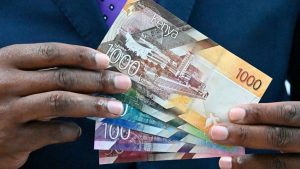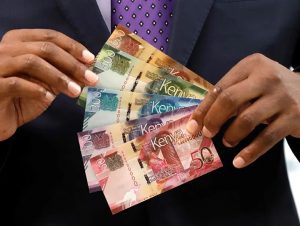When the forex markets closed on the 19th of October 2020 the Kenyan Shilling broke the 109 point against the United States dollar to reach 109.2100 Kenyan Shillings.

Dealers in the forex markets however quoted the Kenyan Shilling at far lower rates, as an increase in the demand for import, beat the earnings from foreign exchange brought on via the exporting of tea, horticulture as well as other exports.
The Bloomberg Markets’ United State Dollar to Kenyan Shilling Exchange Rate revealed that the Kenyan Shilling began trading at 108.6000 Kenyan Shillings to the dollar which is slightly stronger than the previous rate of 108.6200 Kenyan Shillings to the Dollar.
It went on to trade within the range of 108.6500 Kenyan Shillings to the Dollar, to 109.2100 Kenyan Shillings to the Dollar up until the time the Forex markets closed.
The weekly bulletin by the Central Bank of Kenya (CBK) revealed that on the 15th of October 2020, the Kenyan Shilling traded at 108.61 to the Dollar. On the 8th of October 2020, it traded at 108.53 Kenyan Shillings to the Dollar.
In the past 12 months the Kenyan Shilling has been traded between 100.2900 to 109.2100 to the Dollar.
The situation with the Kenyan Shilling, is coming at a time when the nation’s Public Debt has increased. The weakened Kenyan Shilling of sustained as is, is expected to negatively affect the nation’s debt repayment.

Data from the Central Bank of Kenya (CBK) and the National Treasury showed that the country’s Public Debt increased from 6.2 trillion Kenyan Shillings in February of 2020, to 6.7 trillion Kenyan Shillings in June of 2020 and then 7.1 trillion Kenyan Shillings by August of 2020.
According to the Central Bank of Kenya (CBK) domestic debt in August of 2020 was at 3.4 trillion Kenyan Shillings, external debt standing at 33.88 billion dollars (3.7 trillion Kenyan Shillings).
One more downside of the Kenyan Shilling weakening is that importers will now have to spend more Kenyan Shillings, in order for them to import their numerous goods.
Exporters on the other hand will benefit from this, as they will be making more money in Kenyans Shillings, from their exports.
An increase in demand for the Kenyan Shillings by importers this end month, means that the pressure on the currency, might remain a little while longer. This is because the demand for the Kenyan Shilling outweighed the foreign currency inflow from exports, remittances, as well as tourism.
Electricity bills are expected to go up this October as a result of the present state of the Kenyan Shilling. The electricity costs and bills will be adjusted to better reflect the current situation.
Are there any other topics, news or categories that you would like us to write on? Feel free to reach out to Mpesa Pay in the comment section.


